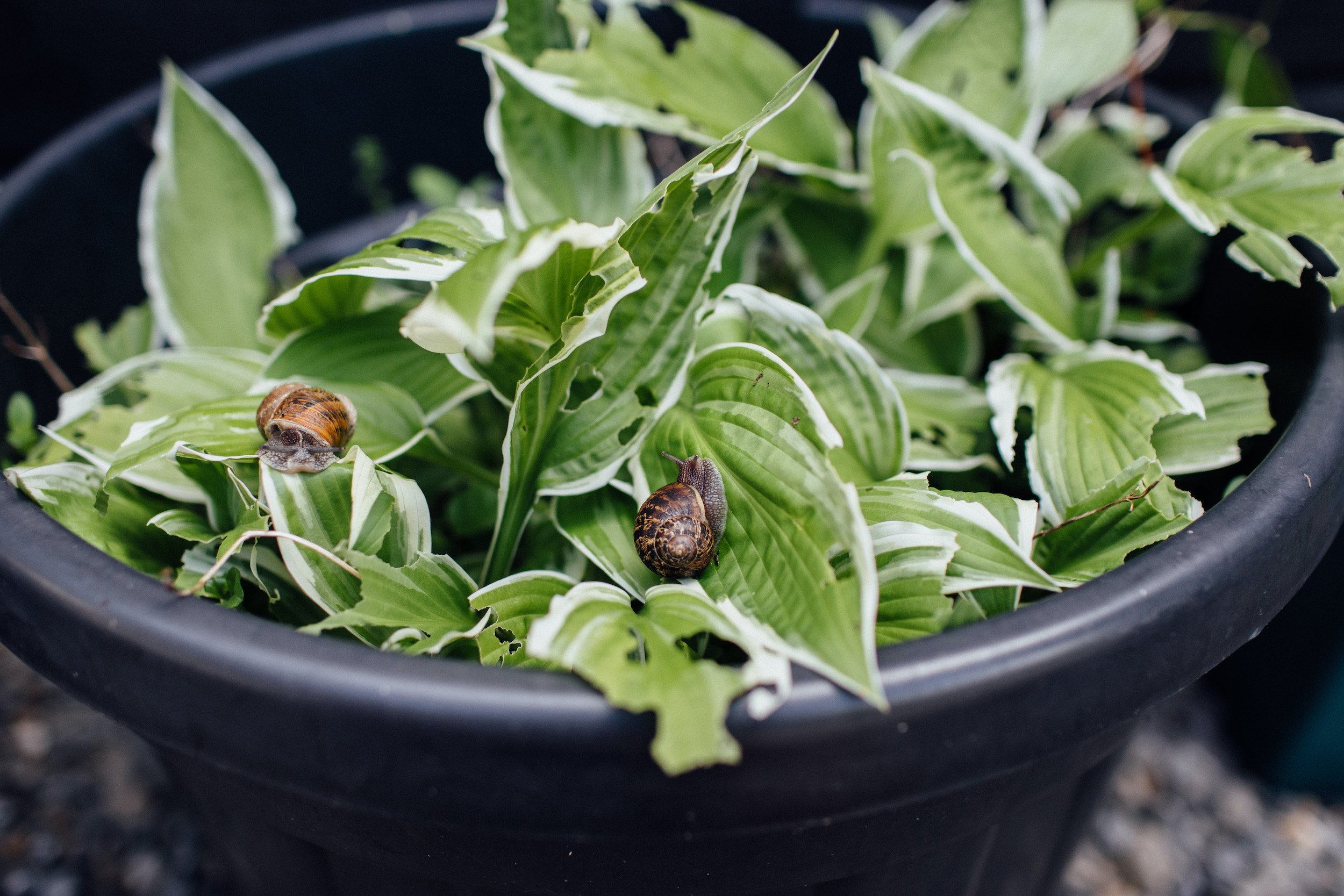Five favourites: slug and snail resistant plants
We’re really lucky in our garden that, despite being in a fairly damp part of the country, we don’t suffer too much from slugs and snails. However, we know that’s not the case for lots of you! One of the questions we get asked most frequently by our clients is how to protect plants from being eaten by slugs and snails. And our top answer, for those who have heavy gastropod traffic, is simply to choose plants that they don’t like to eat…
It might sound like a really obvious solution, but there are actually hundreds of plants that won’t get munched, so rather than trying to protect the plants they do like, it can be worth just focusing on these ones instead. Here are five of our very favourites (and some bonus extra ones at the end too!)
Foxgloves
(Digitalis purpurea)
We absolutely love foxgloves, there is nothing quite like their amazing spires in the summer time. It’s an added bonus that they generally remain free from any snail and slug nibblings.
Easily grown from seed, foxgloves are biennials, that grow their foliage for the first year and then flower in the second summer. You can scatter the seed directly onto the ground, and hope that some of it germinates and emerges, or sow into seed trays, and plant out in the Autumn ready for the following Summer. Read all about growing them in our guide to foxgloves.
2. Ferns
It’s no secret that we are obsessed with ferns! We love them in shady and damp spots, especially the evergreen varieties that look good throughout the whole year.
With an absolutely dizzying array of different ferns to choose from, there is a perfect one for every taste and spot (even some that can cope with a bit of sunlight).
Slugs and snails generally seem unfussed about eating them — as do most other pests — so they really are a low maintenance plant to include. Their gorgeous green foliage is the perfect backdrop to other flowering plants.
Read more about growing ferns and which varieties to choose in our guide to ferns.
3. Hellebores
(Helleborus spp.)
Another glossy, leathery-leaved plant, hellebores are a must have for us in a Winter garden. Blooming when little else is in flower, their delicate drooping flower heads really brighten up the garden.
Another easygoing and low-maintenance plant (they often are the best kind!) hellebores need little more than an annual cut back of dead leaves. Find out more on our guide to hellebores.
4. Hydrangeas
A perfect plant for where we live in South Wales, hydrangeas do well in areas of high rainfall and acidic soil. While the slightly old-fashioned granny hydrangeas of pink/blue have fallen a bit out of fashion, there is something of a craze at the moment for those with more tasteful flower heads, such as Hydrangea ‘Annabelle’ and Hydrangea ‘Limelight.’
As well as looking amazing on the plant, you can cut the flowers for the vase, and they dry beautifully as well. We love ours underplanted with geraniums (see the pic at the top of the post...)
To find out more about growing hydrangeas, check out our hydrangea guide.
5. Geraniums
Geraniums are just a great plant for so many situations… Low-maintenance, quick to establish, growing happily in a range of conditions, and pretty much pest free too.
Geraniums can make brilliant ground cover in beds, and also work well as underplanting, or in pots. Geranium ‘Roxanne’ (pictured right) is an especially long-flowering and laidback variety.
Read more about how to grow geraniums.
Bonus plants…
If your garden is a magnet for slugs and snails, it’s handy to know that there are lots of plants they don’t like! These are just some of our very favourites, but all of the following are also pretty resistant to being munched:
Achillea, Alliums, Artemisia, Astilbe, Astrantia, Campanula, Cyclamen, Erigeron, Euphorbia, Heuchera, Lavender, Nepeta, Penstemon, Sedum, Stachys byzantina











